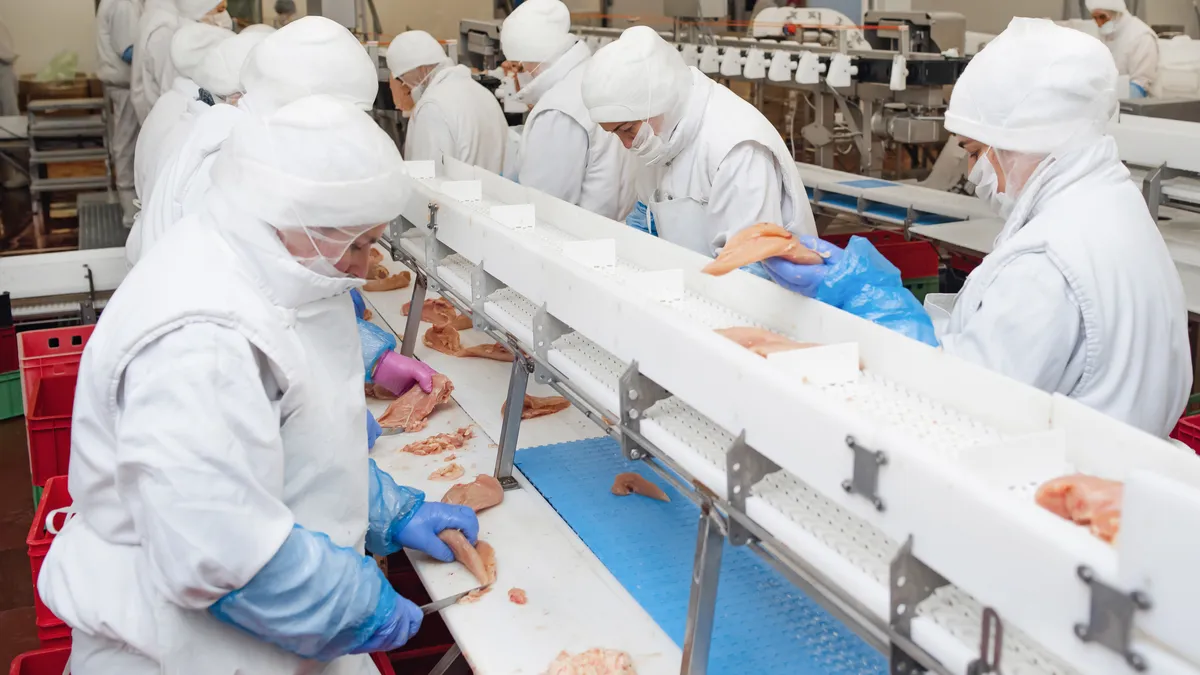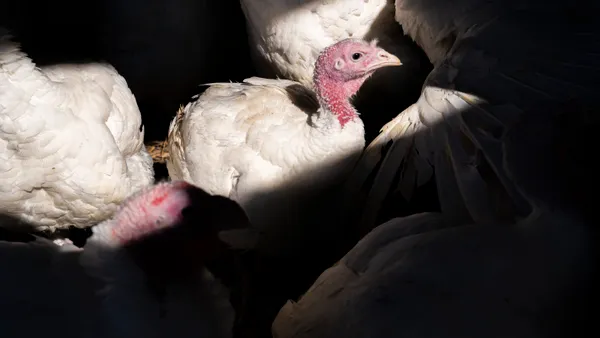Dive Brief:
-
The U.S. Department of Agriculture said it will share an update on next steps regarding a “time-limited” trial that allows certain pork processing plants to operate at increased line speeds, ahead of its self-imposed deadline in the coming days.
-
Earlier this year, USDA extended the trial period to Nov. 30 so it could have more time to finalize a report on the effects of increased line speeds on workers. “This is a complex issue that requires careful consideration and the right data to support any decision,” an agency spokesperson said in an email Monday.
-
But with a looming deadline overhead, USDA is facing criticism about its inaction on the matter. A blog post from the Senate Agriculture Committee urged USDA to create a more permanent solution to the temporary line speed trials or file another extension as hog farmers navigate through tough market conditions
Dive Insight:
Without a permanent solution or extension in place, pork processing plants will have to reduce their line speeds and operational capacity, affecting the pork supply chain, demand and inflation, according to the blog post.
“Economic returns for hog farmers are already historically poor and USDA’s inaction in providing guidance and certainty to the industry risks making the farm economic conditions for hog farmers more dire now and well into the future,” the Senate Agriculture Committee post reads.
Historically, increased line speeds for animal slaughter have spurred much debate and heated controversy.
On one hand, proponents argue the increased speeds generate more food products and allow the U.S. to be more competitive with exports as technological innovations improve efficiencies without compromising worker safety and food safety. But critics say the faster lines are unsustainable and a hazard to workers.
In response to the committee post, a USDA spokesperson said the agency has repeatedly told the industry an update with next steps will be given before Nov. 30. USDA also encouraged Congressional members to focus more importantly on delivering a Farm Bill next year. A spokesperson issued the following statement:
“What’s more straightforward is the need for the Senate Agriculture Committee Minority to focus on meeting deadlines for their own legislation that they are responsible for, including a Farm Bill and a budget that would provide USDA and farmers and small businesses — including the pork farmers and processors mentioned in this release — the certainty we all need so we can best do our jobs.”
Efforts by USDA to remove the maximum line speed of 1,106 hogs per hour failed after a federal Minnesota court prohibited the agency’s final rule in 2021. Later that year, USDA created a workaround “time-limited” trial allowing processors to enroll in the optional New Swine Slaughter Inspection System so they can operate beyond the line speed cap.
The original deadline for the trial was March 4, 2023, but USDA extended it to Nov. 30 so the agency could have more time to finalize a report about the effects “increased line speeds have on establishment workers” and to help determine future actions.
Currently, six processing plants are in the program and nearly 40% of the U.S. supply of hogs is located within 100 miles of the facilities.











